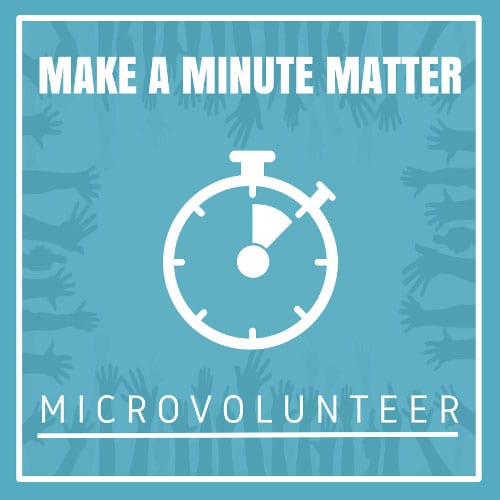
December 21, 2018; GuideStar Blog
Nonprofit leaders know that some of their best volunteers—or potential volunteers—are busy people who may hesitate to commit to frequent meetings or big blocks of volunteer time. They also know that over time, committed volunteers often become donors. Writing for the GuideStar blog, Latasha Doyle describes a trend toward “microvolunteering” that allows volunteers to stay engaged with nonprofits they care about through brief one-off or episodic opportunities. Done well, this can lead to what she describes as “a living volunteer body that ebbs and flows but is always producing results for the larger organization.”
But for that vision of volunteering to be experienced, organizations have to keep an eye out for matches between supporter interest and organizational need, and this is an orientation that requires a shift in mental model for some organizations. It also imposes a discipline of getting to know one’s supporters…you know, as in relationship-building. It builds group intelligence and potential power and if one looks at it as an opportunity rather than a task, it can create the ability to expand and contract as needs do.
Sign up for our free newsletters
Subscribe to NPQ's newsletters to have our top stories delivered directly to your inbox.
By signing up, you agree to our privacy policy and terms of use, and to receive messages from NPQ and our partners.
In other words, the habit of pulling supporters in to do periodic work of consequence pays off in many more ways than one, but it requires careful attention. Microvolunteering should be focused on meaningful tasks that support the work of the nonprofit—not busywork to keep people loosely connected to the organization. Doyle notes that microvolunteering “will only work when nonprofits get specific on what they need help with—and then break that into micro-tasks that can be accomplished quickly online or in person. This also means avoiding vague calls to action: ‘Anything helps.’”
In addition to the benefits of getting real work done, one task at a time, microvolunteering can help to keep supporters engaged over time, reducing volunteer turnover and, as noted above, quite possibly engaging them as donors, too. Microvolunteers are also good ambassadors, and when deployed through social media they may increase website and social media traffic if they get into the habit of looking for and sharing “micro” opportunities.
Microvolunteering is meant to expand, not replace, the work of staff and volunteers who have the time to show up on a regular basis, but it is only a failure of imagination and habit that keeps us blind to the multiple benefits of this kind of engagement. It’s worth pausing to consider how a whole lot of “less” volunteer time could add up to a whole lot of “more” capacity.—Eileen Cunniffe and Ruth McCambridge












